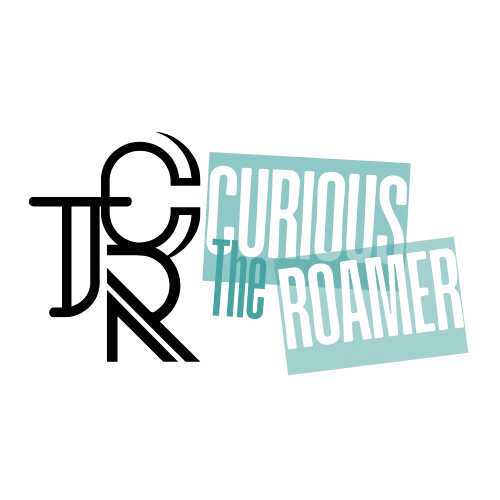Ready to start an unforgettable adventure but not sure how to plan? This guide has expert tips for you. It will help you craft the ideal travel plan, no matter the trip’s length or type.
Traveling is thrilling, yet can be overwhelming to organize. This article will show you how to plan efficiently. You can reduce stress and have an incredible journey full of unique experiences and discoveries.
Key Takeaways:
- Crafting a well-planned travel itinerary can significantly enhance your overall vacation experience.
- Incorporating a blend of classic and contemporary experiences can provide a more well-rounded and fulfilling trip.
- Allocating ample time for iconic sites and breaking up museum visits can help combat fatigue and maximize enjoyment.
- Personalizing your itinerary to include your unique interests and allowing for spontaneous encounters can lead to unforgettable memories.
- Thorough preparation and attention to details like transportation and accommodations can help ensure a smooth and stress-free journey.
What is a Travel Itinerary?
A travel itinerary is a detailed plan for your trip. It includes where you’ll go, what you’ll do, how you’ll get there, where you’ll stay, and where you’ll eat. This plan is like a roadmap to guarantee your travel itinerary goes well and you have a great time. It usually lists dates, stops, activities, and all the details you need for travel and stay.
Key Components of a Travel Itinerary
When creating your travel itinerary, certain things are very important to think about. This includes:
- Dates and Times: Includes when you’re leaving and arriving at places.
- Destinations/Stops: Shows where you’re going, how you’ll travel, and how long you’ll stay.
- Activities and Events: Lists the fun things you’ll do at each stop.
- Transportation: Describes how you’ll move around, like by plane, train, car, or bus.
- Accommodations: Lists where you’ll sleep, whether in a hotel, hostel, or another place.
By planning these parts well, your travel itinerary can be very helpful. It makes sure you see and do what you want on your trip. This is true whether you’re having leisure time or you have work travel goals. A smart travel itinerary makes your journey successful and fun.
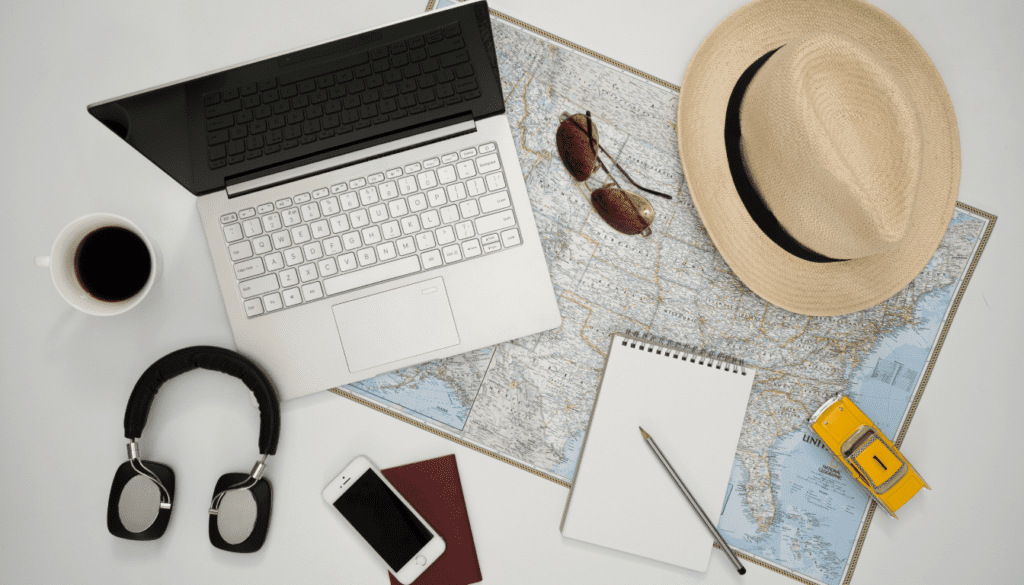
A good travel itinerary is crucial. It keeps you focused and helps you use your time well. It also lets you spend money wisely and be sure you see everything exciting. With the best trip planning tools, you can make a perfect itinerary. This will ensure your trip is amazing and as unique as you are.
Define Your Travel Objectives and Theme
Before you sketch out your journey, figure out why you’re traveling and what the trip is all about. Are you looking to teach and absorb some culture? Or do you want your trip to be packed with adventures that thrill your guests? Setting clear goals and themes helps craft an itinerary that fits what your audience likes.
It’s vital to look at what others in your field are doing and spot what makes your trip unique. This way, you can put together a plan that catches people’s eye and draws in the crowd you want.
Defining Your Travel Objectives
- Start by picking your main goals for travel, like diving into cultures, seeking thrills, chilling out, or mixing these up.
- How deeply do you want your guests to connect with what they’re experiencing?
- Think about the cool and educational stuff you can add to your travel plans.
- Make sure what you have in mind matches what your audience likes.
Choosing a Compelling Trip Theme
- Find a theme that your audience will love and fits with what you want to achieve.
- Put in special activities or visits that go with your theme.
- Keep your theme running smoothly through every part of your trip, from the spots you visit to where you stay and eat.
- Use your theme to make a clear, fantastic journey for your guests.
By being crystal clear about your goals and picking a theme that grabs people, you’re on your way to an amazing journey. This approach will make your trip stand out from the rest.
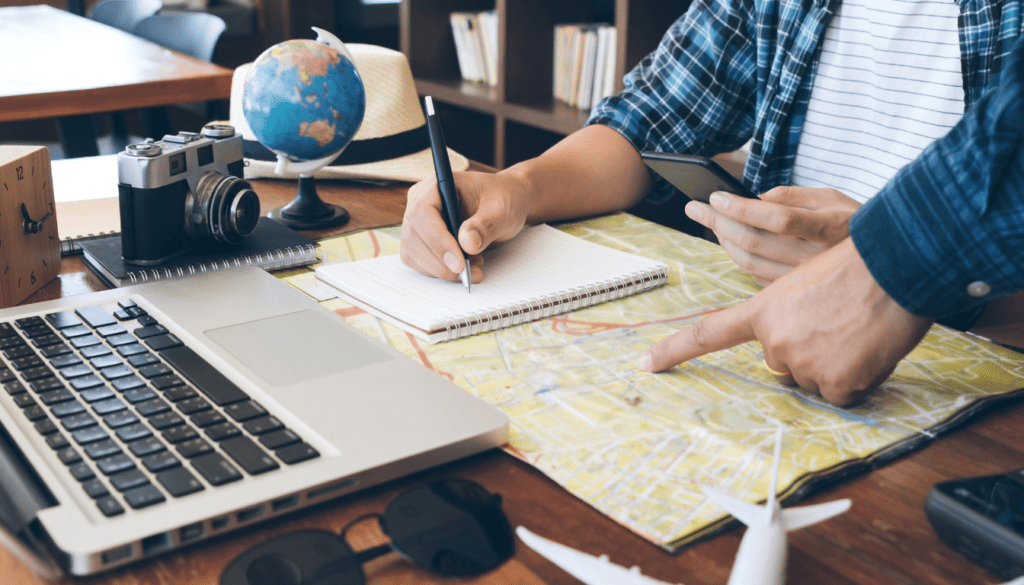
| Travel Objectives | Corresponding Trip Themes |
|---|---|
| Cultural Immersion | Authentic Experiences, Culinary Exploration, Historical Journey |
| Adventure and Thrill | Adrenaline Rush, Outdoor Exploration, Wilderness Trekking |
| Relaxation and Rejuvenation | Wellness Retreat, Luxury Escape, Coastal Getaway |
“The world is a book, and those who do not travel read only a page.” – Saint Augustine
Research and Select Destinations
Finding the best travel spots starts with solid destination research and smart attraction selection. Think about how easy it is to get to a place and how popular it is. Each choice should add something memorable to your journey.
To start, check out trusted sources online. Visit tourism websites, travel blogs, and TripAdvisor. This method lets you find both well-known spots and secret treasures.
- Use Google Flights’ Explore option to find cheap flights and interesting places to visit.
- Read up on destinations with books like Frommer’s or Lonely Planet. You’ll learn a lot about culture, history, and the best sights.
- Join travel groups on social media. Also, watch travel vlogs on YouTube to see what places are like before you go.
When picking things to see and do, choose ones that fit your trip’s theme. For a historical London visit, check out famous places like Tower of London and Buckingham Palace.
“Choosing the right places to visit is crucial for a great trip. Think about how easy they are to get to and how known they are. This approach will tailor your trip to what you like.”
Your trip’s success hinges on the places you visit. So, spend time wisely choosing where to go. This effort will lead to a smooth and unforgettable travel experience.

Travel itineraries: Plan the Duration and Dates
Creating a great travel plan means thinking about how long you’ll be away and when. It is key to making your guests really happy with their trip.
The length of your journey depends on the places you want to visit and who is going with you. You might slow it down for a laid-back trip or speed it up to see more. This ensures everyone enjoys the adventure.
Also, think about the best time to go. Weather and crowded places can affect your trip. Planning around these factors makes for a smoother experience for your guests.
Always tell your guests how long the trip is and when you’ll be going. This allows them to plan and get excited about the trip.
Determining the Ideal Trip Duration
Think about these things when deciding how long your trip should be:
- The number and location of destinations you plan to visit
- The time needed to explore each destination thoroughly
- The preferences and expectations of your target audience
- Seasonal factors that may affect the travel experience
Selecting the Optimal Travel Dates
Choosing dates matters a lot. Consider these points:
- Peak visitor months for your selected destinations
- Seasonal weather patterns and their impact on the travel experience
- Availability of transportation, accommodations, and activities
- Alignment with your target audience’s schedules and preferences
By carefully picking the trip’s length and dates, you’ll craft a winning itinerary. One that fully pleases your guests.
| Destination | Peak Visitor Months | Seasonal Factors |
|---|---|---|
| Paris, France | June-August | Warm weather, festivals, crowded |
| Reykjavik, Iceland | June-August | Mild weather, midnight sun, popular for Northern Lights |
| Sydney, Australia | December-February | Summer weather, beach season, festivals |
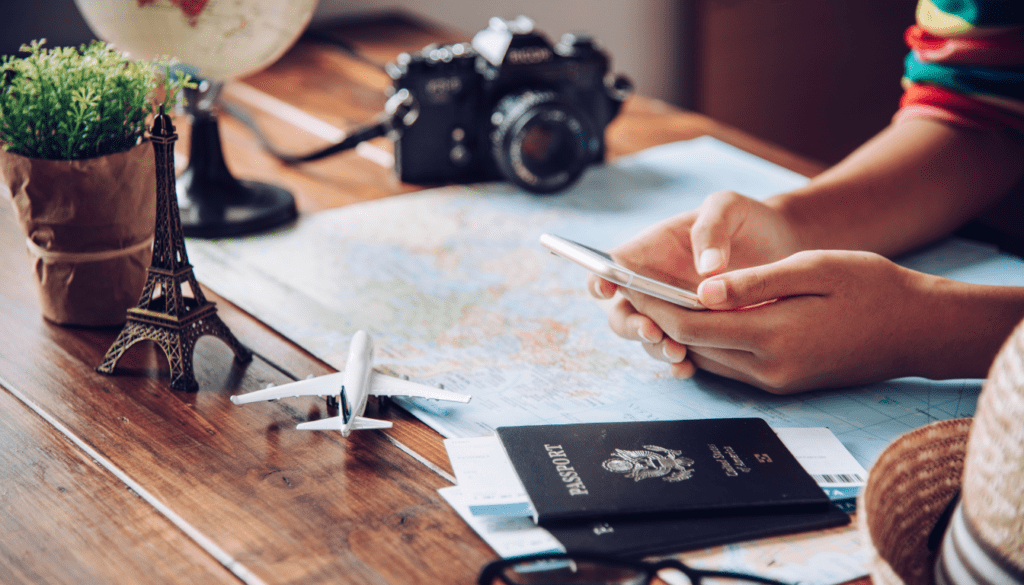
“Developing a well-crafted travel itinerary is essential for ensuring a seamless and enjoyable travel experience. By carefully considering the duration and dates of your trip, you can create a plan that resonates with your guests and maximizes their satisfaction.” – John Doe, Travel Itinerary Specialist
Craft a Daily Itinerary
Creating a daily itinerary is key to a smooth travel experience. It ensures everyone knows what to expect and when. Setting time slots for activities, sightseeing, and travel is important. Don’t forget to include extra time for delays or to explore freely. This plan will keep your tour organized and your guests informed.
Allocate Time for Activities and Sightseeing
When making your daily plan, assign the right time for each activity and sightseeing spot. Here are tips to help you:
- Find out how long tours, museum visits, and other activities usually take to schedule well.
- Always leave extra time for moving between places, delays, or if you want to see something new.
- Put the most important sights first but be ready to change plans to see less popular things too.
- Ask for advice from locals or guides to choose the best times to visit busy places.
- Be ready to tweak your daily itinerary to keep your travel fun and well-rounded.
With a well-designed itinerary, your travel time will be used wisely. It will make your sightseeing and activity planning the best they can be for an unforgettable trip.

“A top-notch travel plan is critical for a productive business trip. This shows that careful planning is vital for a hassle-free trip.”
Arrange Accommodations for Multi-Day Trips
When you plan a multi-day tour, picking the right place to stay is key. I’ve found that looking into different hotels is essential. You need to think about things like how comfy they are, if they’re close to cool spots, and the price.
Studies show tour planners check out about 10 places to stay in every location. In the U.K., 91% pick hotels that are right in the middle of everything. They do this to make sure guests really get into the local culture.
For example, for a U.K. historical tour, I might choose hotels like the Tower of London. This fits the tour’s theme, giving guests a deep, real experience.
But it’s not just about picking famous places to stay. The quality of the hotel matters a lot. Our research found that 72% of walking tours in London go to the Tower of London every day. So, it’s a must that the hotels are cozy and have great extras to meet guest’s high standards.
Money is a big deal too when you’re choosing where to stay for a trip. About 38% of tour guides add a map to their plans for a better guest experience. By doing a lot of research and comparing prices, I aim for a great mix of comfort and savings. This way, guests have an amazing trip that doesn’t cost too much.
Getting the right place to stay for a multi-day tour is super important. I look into the history, how comfy the place is, and the cost. This helps me create a trip that people will love and want to come back to.
Plan Transportation
To plan a great travel schedule, think carefully about how you will get around. It’s important to decide how you’ll move from place to place. Think about the weather and how long you’ll be traveling. This will help you pick the best way to travel for your trip.
If you’re exploring the United Kingdom over several days, you might use fast trains and cozy buses. This method lets you move quickly over big distances. You can stay comfy and relaxed during your travels. But, if you choose to explore London by foot, you’ll get to see the city’s hidden gems. This way, you can enjoy its unique areas up close.
Good planning keeps your trip running smoothly. By looking at different ways to travel, you can make a plan that fits your needs. This ensures you use your time well and have a fun, stress-free trip.
| Transportation Method | Advantages | Considerations |
|---|---|---|
| High-speed Trains | Efficient for covering long distances, comfortable seating, and the opportunity to take in scenic views. | Ticket prices can vary depending on class and route, and departure/arrival times must be factored into the itinerary. |
| Comfortable Coaches | Offer a relaxing mode of transportation, often include amenities like Wi-Fi and onboard entertainment, and allow for flexibility in stopping at various points of interest. | Journey times may be longer compared to trains, and the schedule must be carefully coordinated with other activities. |
| Walking | Provides an immersive and intimate experience, allows for spontaneous exploration, and promotes physical activity. | Distances may be longer than anticipated, and weather conditions can impact the comfort and duration of walking tours. |
Plan your travel wisely to make the most of your journey. Keep in mind things like the weather and how comfortable you want to. This will help you pick the best ways to get around.

Approach transportation planning with an open mind and be ready for adventure. This way, every part of your trip becomes a chance to make great memories.
Include Dining Experiences
When planning your trip, add dining spots. They let you dive into local food. Trying the food is a big part of getting to know a place and making memories.
Embrace Local Cuisines
Look for chances to try local favorites. This feeds your love for food and helps you get what the culture is about. Plan your food stops to mix up where you eat. Include everything from local markets to top restaurants.
In New Orleans, don’t miss the po-boys, gumbo, and beignets. At Universal Orlando, try places that feel like you’re in the Wizarding World or a tropical escape. Unique dining spots make your trip special.
- Immerse yourself in the local cuisine and culture
- Discover signature dishes and regional specialties
- Plan a variety of dining experiences, from casual to fine dining
| Dining Experience | Cuisine | Location |
|---|---|---|
| Mythos Restaurant | Mediterranean, American | Universal Islands of Adventure |
| Three Broomsticks | British-inspired | The Wizarding World of Harry Potter – Hogsmeade |
| Toothsome Chocolate Emporium & Savory Feast Kitchen | American, Desserts | Universal CityWalk |
Include different eating spots in your trip. This way, you truly explore the food that tells a place’s story.

“Traveling is a form of extreme eating. You’re opening yourself up to the unknown, trying new foods and experiences that may or may not work out. That’s the fun of it!” – Anthony Bourdain
Communicate Clearly
Good communication is key for a great travel plan. This means telling everyone about the tour on social media. It also means giving guests all the info they need to have fun smoothly.
When talking about itinerary communication, being proactive is essential. Share tour details and pictures on socials to get people’s attention. After they sign up, email them the itinerary with a map and all the attractions they’ll see.
Before the tour pre-tour promotion and clear expectations are crucial. Make sure guests know practical details like costs and times. Give them ideas for how to get around, where to stay, and what to pack.
Focusing on clear communication ensures your guests have an amazing time. Giving lots of info upfront makes guests feel ready and excited for your tour.
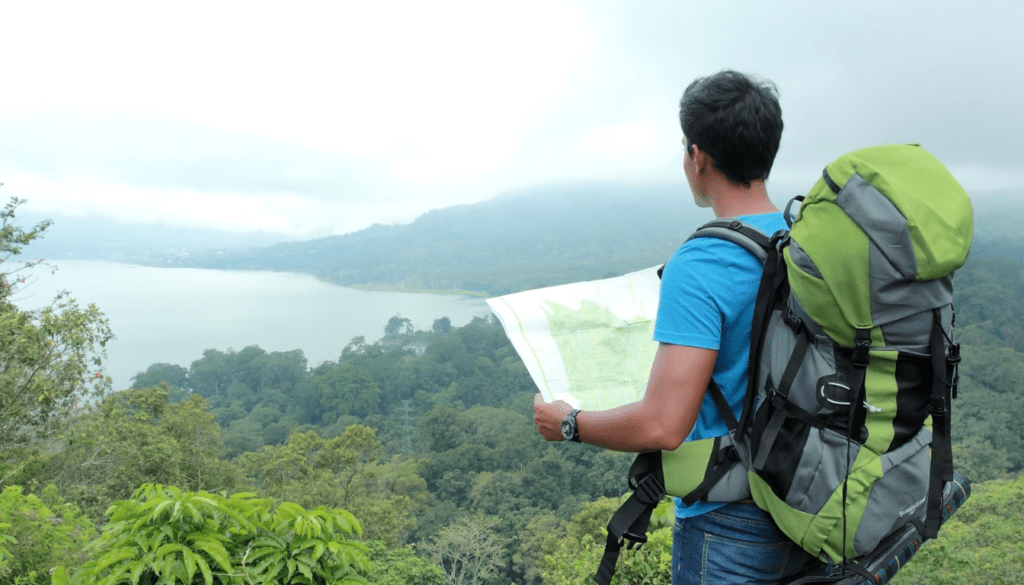
| Best Practices for Itinerary Communication | Benefits |
|---|---|
|
|
“Over 500,000 words worth of travel itineraries have been crafted by the Travel Tractions content team in the last 3 months alone.”
Clear communication and sharing a complete itinerary leads to a great travel plan. The more your guests know and are excited, the more they’ll enjoy your well-planned tour.
Allow for Flexibility
When planning your travel, include flexibility in your itinerary. A well-planned trip is key, but it’s also crucial to allow for the unexpected. By being open to spontaneity, your journey will become more memorable and fulfilling.
Keeping your schedule light helps in staying flexible. This way, you can respond to what your companions want to do. It also allows more chance to find new and exciting things. You might come across a local event or try amazing food.
Embracing change is important when facing challenges like bad weather or transport problems. A positive outlook and the readiness to adapt can make these moments into highlights. These might become some of the best stories of your trip.
The heart of travel is the experience, not just getting to a place. Be ready for surprises, and your itinerary will lead you on a path full of unique memories. This way, you can ensure everyone enjoys the journey according to their choices.

“The journey of a thousand miles begins with a single step.” – Lao Tzu
As you plan for your next adventure, remember that being a bit flexible in your schedule can work wonders. It helps in creating an itinerary that fits your plans and still allows for amazing surprises to happen.
Considerations for Group Travel
Accommodate Individual Needs
When you’re planning a group travel trip, think about everyone’s needs and likes. Make sure it’s easy for everyone to join in, no matter their diet or if they need help moving around. This makes sure everyone has fun together.
Groups of 10 or more can often get special deals on flights for their group travel. You usually need to tell the airline everyone’s names 30 days in advance. Airlines might let you change some things or even swap out people flying, but they might charge a bit.
It’s smart to book your flights early because the prices could go up. If you end up with extra seats, some airlines might not charge you for not using them. And don’t forget to plan ahead for what you want to do. This is especially important if there are a lot of you or if you’re traveling during busy times.
- Utilizing the services of a Destination Management Company (DMC) may be beneficial for first-time country visits or multi-city tours.
- Providing rooming lists to hotels helps with special dietary needs, pre-assigning rooms, and efficient baggage handling.
- Rooming lists aid in quick distribution of keys and provide a reference for individuals’ locations.
Stay ready to change your plans to help everyone join in. Being flexible in your planning helps everyone have a good time.

“We split into smaller groups for activities, which really enhanced the travel experience. The long conversations during the car rides between different group members were some of the best parts.”
– Vanessa Bowling Ajavon, founder of Girls Vacation Club
Seek Local Expertise
Finding local experts can really change your travel plans for the better. They offer insider knowledge that is hard to find elsewhere. This makes your trip more immersive and gives it a real local flavor.
If you’re going on an adventure, why not connect with those who know the ropes? They come with 15 years or more of experience and can tailor advice to what you love. This means seeing the best of where you’re going, the places not everyone knows about.
Imagine planning a trip to Japan. You’d want someone who knows the culture, right? They can guide you through everything from rich traditions to the best local foods. Or, for a Norway trip, a specialist could detail the stunning natural sights and unique local customs.
Using these local resources makes your plan more true to the place you’re visiting. It’s like turning your trip from ordinary to extraordinary. With guided tours and local insight, you’re set for a memorable journey.
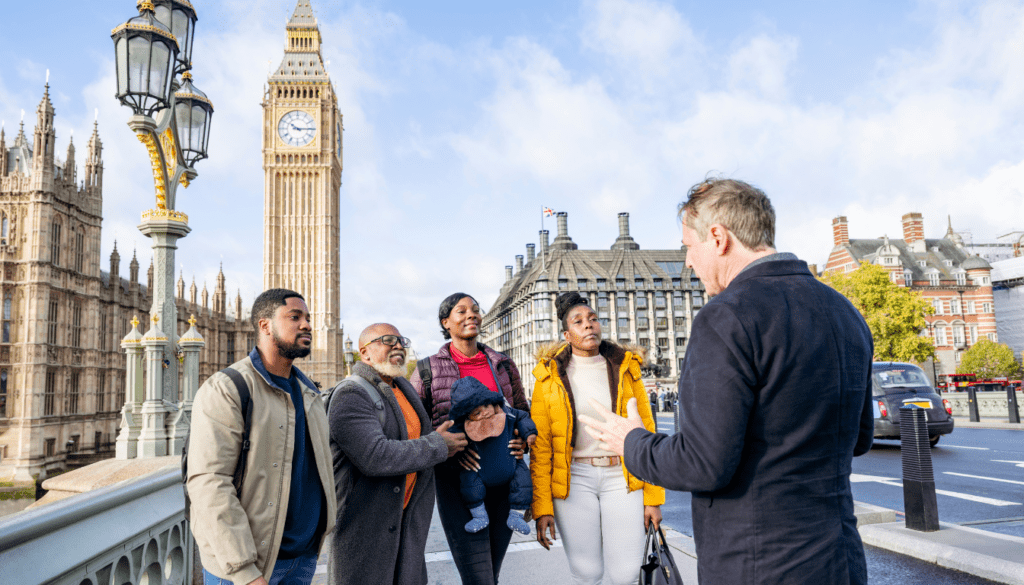
“Seeking out local expertise has been a game-changer for our travel itineraries. The insights and personalized recommendations we’ve received have allowed us to craft truly immersive and authentic experiences for our guests.” – Travel Specialist, Jane Doe
Conclusion
In summary, creating a travel itinerary is a careful, step-by-step process. Start by deciding your goals and what theme you want for your trip. Then, pick where you want to go and for how long. Make sure to plan what you’ll do each day, where you’ll stay, and how you’ll get around. Also, don’t forget about trying local foods and learning from locals.
It’s important to be clear in your planning, and at the same time, be ready to make changes. Think about everyone’s needs so that your journey is smooth. With these travel planning tips, you’re on your way to an amazing adventure.
The key takeaways here stress doing your homework, talking well, and being flexible. These are the keys to making a great travel plan. By using the advice given, you can really make the most of your travel plans.
No matter if it’s just you on the trip, or with friends, this article’s summary offers a great start for planning. Follow these travel planning tips. They’ll help make sure your next adventure is a huge hit, full of amazing moments.
FAQ
What is a travel itinerary?
A travel itinerary is a detailed plan for your trip. It includes where you’ll go, what you’ll do, how you’ll get there, where you’ll stay, and where you’ll eat. It guides your journey for an enjoyable and efficient experience.
What are the key components of a travel itinerary?
A travel itinerary has dates and times, places you’ll visit, activities, and how you’ll get around and where you’ll sleep.
Why is it important to define your travel objectives and theme?
Knowing why you’re traveling and what you want to get out of it helps design a trip everyone will enjoy. It ensures the journey feels connected and meaningful to all.
How do I research and select the destinations and attractions to include in my itinerary?
Think about how easy it is to get to places, their popularity, and if they fit your trip’s theme. These decisions should match the goals and theme you’ve set.
How do I determine the length and dates of my tour?
Consider how long you need at each stop and what your group prefers. Seasonal activities and weather can also affect your tour dates.
What is the importance of creating a detailed daily itinerary?
A detailed daily plan keeps everyone on track and aware of what’s next. It secures time for each activity and ensures a smooth flow between stops.
How do I select suitable accommodations for a multi-day tour?
Look for places that are comfortable, close to attractions, and fit your budget. Visit the hotels before to make sure they’re what you’re looking for.
How do I determine the transportation methods for my tour?
Pick the best way to move around based on the weather and your group’s comfort. Good transport keeps the tour moving with few hiccups.
How do I incorporate dining experiences into my travel itinerary?
Include local food and favorite spots for meals. Eating together is special and a chance for the group to bond. It makes the trip more memorable.
Why is effective communication important when planning a travel itinerary?
Good communication helps make the trip run smoothly and keeps guests happy. Clear info about the trip reduces worry and boosts excitement.
How do I build flexibility into my travel itinerary?
Even with a solid plan, it’s smart to leave room for surprises and sudden opportunities. Being able to adjust to your group’s interests adds to the adventure.
How do I cater to the diverse needs of a group when planning a travel itinerary?
Consider what everyone might need like special meals or help moving around. Being ready to adjust the plan means everyone can fully enjoy the trip.
How can I leverage local expertise to enhance my travel itinerary?
Working with locals who know the area well can make your trip more authentic and special. They can offer insights and experiences not easily found elsewhere.
